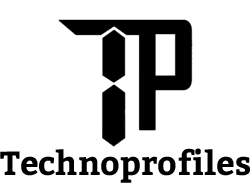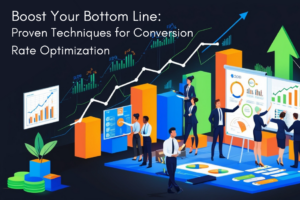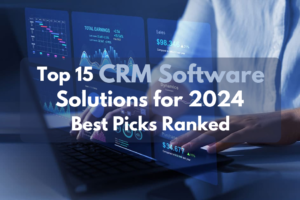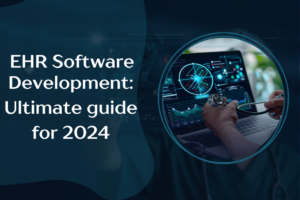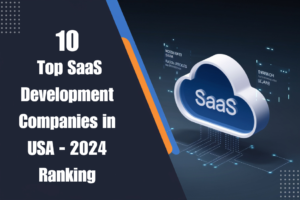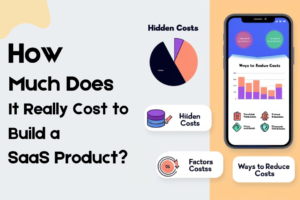Why Is It Important to Integrate Our Asset Management System with Other Enterprise Software?
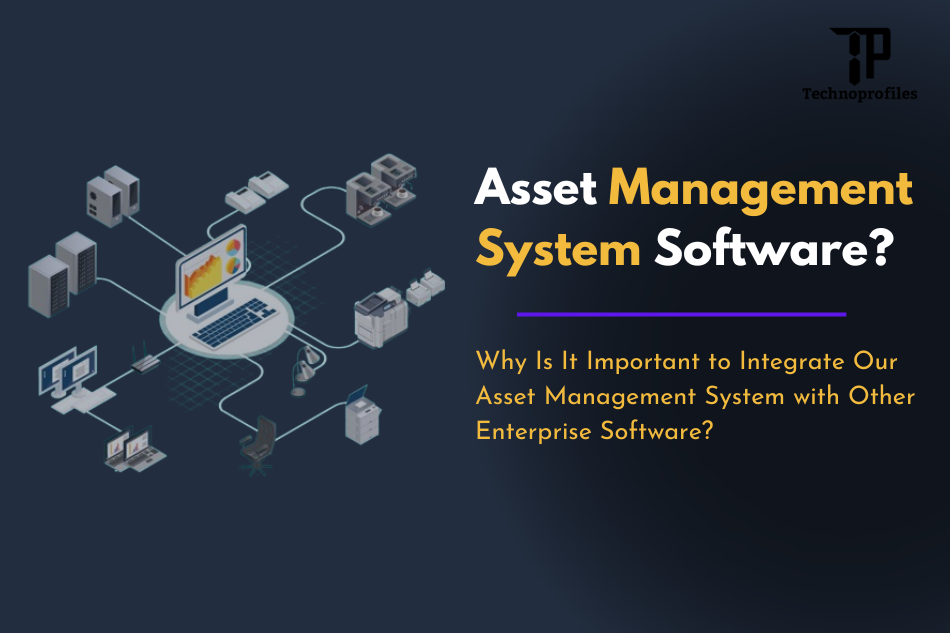
Table of ContentsToggle Table of ContentToggle
The current world we are living in is ever changing and fast hence the need of integrating enterprise asset management systems with other critical software solutions as well as its strategic importance. Imagine your organization like an orchestra where every instrument has a significant role to play. However, when they work together in unity and harmony. The result is nothing less than a masterpiece. Furthermore having an enterprise software that incorporates an asset management system ensures perfect synchronization of your business processes. It is a symphony that plays efficiency and knowledge.
This is the end of asset management in silos. It’s time enterprises adopted interconnected systems speaking a common language, shared valuable insights that empower the right decisions at all levels. More than just linking software, this collaboration empowers productivity and unleashes new dimensions of operational excellence that were earlier unimagined.
In organizations, aligning enterprise asset management with other core functions finance, operations, and customer service—holds the key to new efficiencies and agility. Apart from streamlining work. It will also make sure that data is intact so as not to base them on partial or delayed thinking abilities. Therefore, what is required here is not a mere advancement of management systems but rather a strategic requirement . Which forms the basis for continued growth and competitive edge in today’s fast moving market place
What is Asset Management System?
An asset management system is a form of software designed to track, manage, and maintain the physical assets of an organization throughout their lifetime. It is intrinsic to various operations that cut across the economy, from industry and healthcare to transport and utilities. Essentially, all asset management systems are repositories. Where businesses can trace their assets from acquisition to retirement.
Revolutionizing Enterprise Asset Management System
EAM system landscapes are in a revolution of transformation with technological advancements and strategic organizational priority shifts. Conventionally, These are limited to maintenance and tracking of physical assets. Modern asset management systems, however, go beyond. These are able to integrate seamlessly with other critical enterprise software. Such as ERP and CMMS, creating interlinked ecosystems in which asset data is able to flow freely across departments. The situation where people can make better decisions about things using the help of real-time facts and analytics to increase operational efficiency. Based on data-driven processes, organizations are presently switching from reactive to proactive asset management by adopting AI-enabled predictive & prescriptive models for maintenance. In contradistinction, cloud-based solutions enable corporate companies by making centralized information about assets available. It providing support for distant participation in their management and ensuring flexible operations. Consequently, modern asset management systems have a future with improved performance and operational excellence that will position organizations ahead in a competitive digital world.
How Asset Management systems integration reshapes industry standards
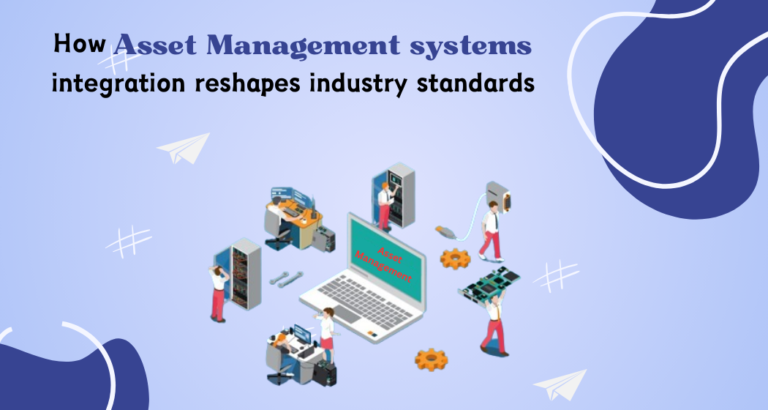
Unveiling the Future of Agile Business Operations
Why Integration Matters: Redefining Success
Integrating asset management systems with enterprise software is essential for achieving competitive advantage. It streamlines operations, enhances efficiency, and enables proactive decision-making, fostering resilience and adaptability in a dynamic business environment.
The Strategic Imperative of Integrated Asset Management System
Asset Management System Unveiled: Beyond Traditional Boundaries
Value Creation: Empowering Through Asset Management Systems
Unlocking Operational Efficiency with Asset Management System
These solutions to the asset management system accomplish this by smoothing workflows and optimizing . The utilization of different assets by making use of data-driven insights in real-time. With such a proactive approach, maintenance tasks can be effectively scheduled with negligible downtime, thus maximizing productivity. Enterprises can handle market demands more timely and be operationally more agile with integrated asset management systems.
Improved Quality Control and Compliance:
Any organization, irrespective of the sectors to which it belongs, cannot afford to compromise on quality. Enterprise asset management systems help in comprehensively managing quality through the performance metrics of assets and by keeping a tab on adherence to the regulatory requirements. This ability goes a long way in not only making products reliable but in protecting brand reputation, too.
Cost Efficiency and Resource Optimization:
Effective management tools drive predictive maintenance and inventory optimization for reduced cost and waste in the operation. This helps businesses come up with relevant plans or insights from data on how to better allocate resources that ensure safeguarding risks and optimum lifecycle management for different asset types.
Delivering Competitive Advantage:
Those organizations that have integrated advanced EAM solutions within a competitive marketplace have a huge advantage. These systems make it possible for providers to give higher service levels. Respond quickly to changing market conditions, and innovate on their offerings. This is one strategic enabler of customer stickiness, which sustains business growth over time.
Future-Proofing Through Innovation:
EAM solutions are constantly evolving since the development of enterprise asset management systems, through IoT-enabled and AI-driven analytics, toward empowering proactive decision-making at the level of adaptive strategy. It incorporates scalability, resilience, and continuous improvement in a fast-paced business environment.
The Power of Integration
Integration is the keystone of modern business efficiency and has changed the way enterprises handle their assets and operations. It offers a way to integrate enterprise management with key software like ERP and CMMS for the smooth flow of work and better overall performance. This ensures continuous workflow across departments through data and supports quicker decision-making and agile responses to market shifts.
In maintenance management, integration means a radical change in asset upkeep. Businesses move from the reactive to the proactive approach of maintenance, with real-time data and predictive analytics that integrated systems provide, minimizing downtime and maximizing resource allocation while extending lifecycles and reducing operational costs while increasing operational reliability.
Driving Performance: Streamlining Workflows
Driving Performance: Streamlining Workflows
Therefore, emerging technologies such as AI and IoT hold the future of integration in their best harnessing. These developments will continue to drive predictive capabilities and data-driven insights, helping businesses to meet the demands of today and be ready for tomorrow. Integration has become the strategic imperative, which assists in the performance, efficiency, and attainment of sustainable growth for any organization in the dynamic business environment.
Key Advantages of Integrated Solutions

There are many key advantages of integrated solutions in business operation. First, it makes data sharing within enterprises possible due to management of enterprise assets and ERP/CMMS platforms. This integration will help to avoid silos or inconsistent data and provide the organization with realistic insights on performance, maintenance scheduling, and resource allocation. That enhances precision in decision-making processes and brings transparency into every action performed by organizations.
Integrated solutions drive efficiency, automate workflows, and synchronize processes. Such businesses optimize resource allocation, reduce data redundancy, make cost savings, reduce downtime, and generally enhance productivity. This is how the streamlined approach fosters operational efficiency and supports long-term sustainable growth.
It gives cross-functional teams the ability to work together through a single platform via which people can collaborate and share data. This strengthens coordination among departments such as operations, maintenance, finance, and procurement. Thus facilitating faster decision-making and innovation. It makes it easier for teams to collaborate seamlessly on all activities concerning assets and strategic initiatives.
Unleashing Data: Ensuring Consistency and Precision
Driving Efficiency: Optimization Across Resources
Thus, asset management system have to be integrated with all other critical software, including ERP and CMMS, for efficiency. Such an integration easily enables an organization to create a workflow for each process, automate some tasks, and even synchronize activities between different departments. Since silos are broken by integration, duplicated or conflicting data are minimized. This translates into cost savings, reduced operational downtime, and increased productivity.
Such integrated solutions help enterprises to reorganize and optimize their resources, respond to market changes more rapidly with faster time-to-market, and be one step ahead of the competition.
Selecting the Right Asset Management Software
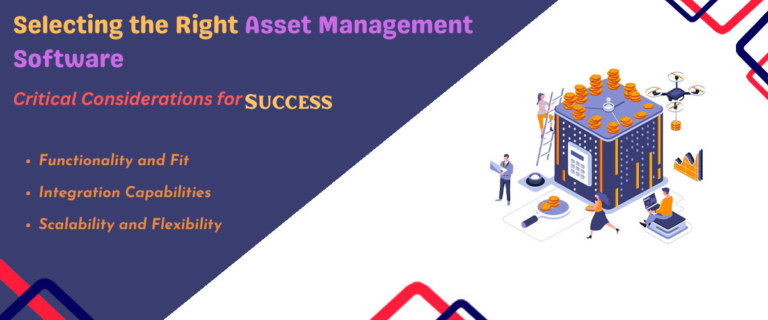
Choosing the proper asset management software is very important to make your business smooth. The asset management software aids in effectively managing the resources of any company by treating equipment and facilities as an asset. These systems integrate seamlessly into any existing enterprise maintenance management system and other software through APIs, thus ensuring seamless data flow. This, in turn, increases efficiency with the ability for real-time updates and synchronized information across platforms. By putting most of the focus on software that has excellent API capabilities. An entity can get the best out of asset tracking, maintenance schedules, and financial reporting while future-proofing operations against changing technology.
Critical Considerations for Success
Selecting the right asset management software is a critical decision for organizations looking to enhance efficiency and streamline operations. Here are key considerations that can guide this process effectively.
Functionality and Fit: The chosen software should closely align with the organization’s operational needs and goals. It should provide comprehensive features that cover the entire lifecycle of assets, from procurement and maintenance to disposal. This ensures effective management across all aspects, including tracking, scheduling maintenance tasks, and monitoring performance.
Integration Capabilities: Seamless integration with existing enterprise systems such as ERP and CMMS is crucial. APIs play a central role in facilitating this integration by enabling smooth data exchange and synchronization across different platforms. This integration ensures consistency and accessibility of asset data across various departments. Thereby improving overall operational efficiency and informed decision-making.
Scalability and Flexibility: It’s essential that the asset management software is scalable to support future growth and adaptable to evolving business needs. It should cater to a wide range of asset types and industries, enabling organizations to expand operations seamlessly without disruption. Customization options should allow the software to be configured according to specific workflows and processes within the organization.
API Mastery: Powering Seamless Integration
API mastery is crucial for modern software systems, especially in asset management software. It allows software to easily connect and work together with other systems and applications that a business uses. This seamless connection ensures that data can flow smoothly between different platforms, such as enterprise asset management and maintenance systems.
When software has strong API capabilities, it improves how workflows operate. It makes data more accurate and helps businesses make decisions faster. APIs also make it easier for software to grow and adapt as a business changes and grows. That’s why mastering APIs is so important for effective asset management software solutions.
Collaborative Synergy: Engaging Stakeholders
Teamwork and cooperation are very essential in any business. Enterprise asset management system are organizations’ ways to manage their resources, like equipment and facilities. These systems are what make everything work right, so-to-speak, and are therefore more commonly called asset management software.
An enterprise asset management system, otherwise referred to as an enterprise maintenance management system, is applied in businesses to closely monitor their respective assets. It schedules maintenance tasks, monitors usage, and ensures the good working condition of the assets.
What really makes these systems powerful is their interoperability with other management systems across the organization. This ensures smooth flow of information between departments, increasing efficiency and communication.
The more the stakeholders are involved—everybody who is part of this process—the more the systems will work. This means a team of people involved, supervisors, even external partners, with a view toward understanding the process and decision-making. This collaborative attitude refines asset management and strengthens the entire organization toward shared goals and success.
Optimization Journey: Monitoring and Iterative Enhancements
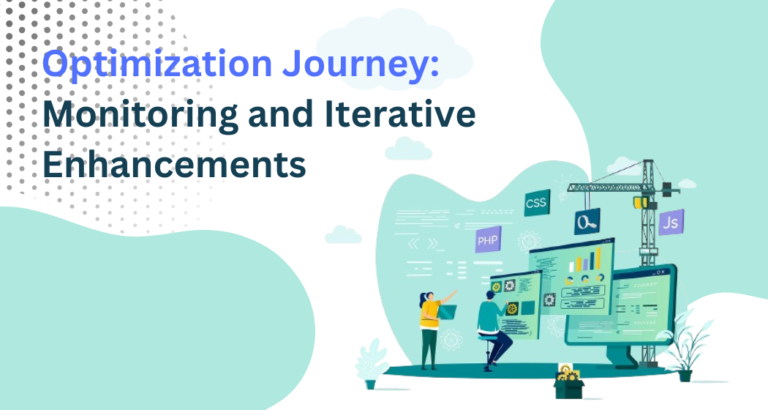
In the world of business operations, optimizing processes is key to success. This is very true for enterprise asset management systems, which help businesses keep tabs on all their resources, including equipment and facilities. Known mostly as asset management software, these systems take a very significant place in the efficient management and maintenance of such assets.
An enterprise asset management system, sometimes also referred to as an Enterprise Maintenance Management System, would be assigned to closely monitor the enterprise’s assets. It makes it possible to schedule maintenance tasks and track usage patterns to ensure smooth running.
This is one of the intrinsic advantages of asset management softwaren it can easily be integrated into any other management system that might be operating in a firm. Such integration will ensure smooth flows of data between different departments of the organization, hence increasing the overall efficiency.
The needs of businesses are subject to change as they continue to evolve. This calls for an optimization journey through continued monitoring and iterative enhancement of the asset management system by regular reviews and updates of the systems to suit changing demands, improve productivity, and enhance achievements of set goals.
Conclusion
About Author

Written By Darshan Saroya
Darshan Saroya is the creator and CEO of the content development company. He writes and has over 7+ years of experience as a content marketer, for technoprofiles.com generating on blogging , article's and website technique.
